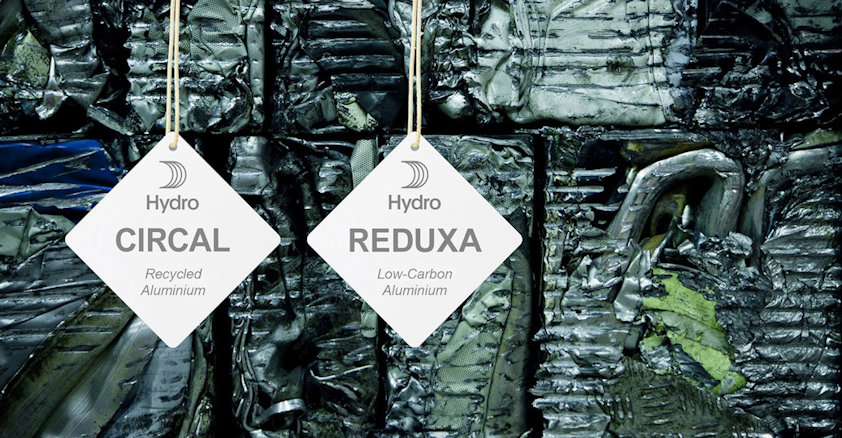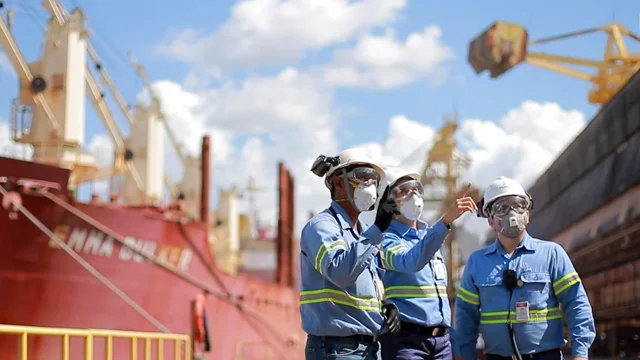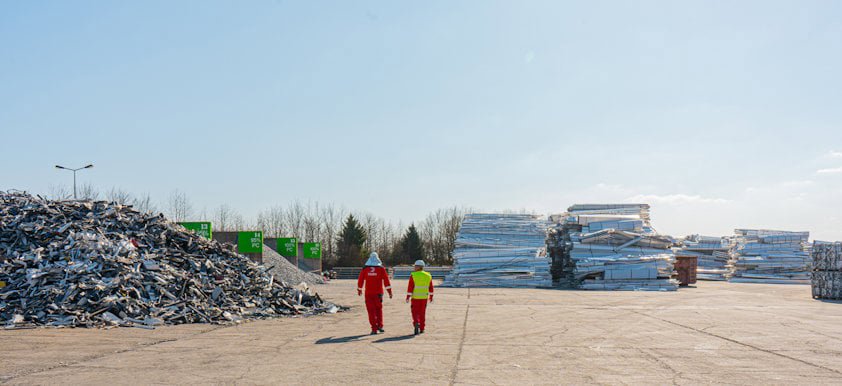To scrap, or not to scrap: Why words matter from a policy perspective
Never before has the demand for action on climate change been as fervent as today. With a growing number of policies, including changes in reporting and taxation, the EU is broadly perceived as a global leader towards a carbon-neutral economy.
While Hydro welcomes these developments and actively seeks to drive the green transition by embedding sustainability across its entire value chain, the company also foresees non-negatable challenges impacting transparency and European competitiveness.
To understand how green or sustainable a product really is, we must look at the entire value chain of its production, upstream and downstream. This is where the problems start, not just from a market perspective, but also from a policy perspective.
Not all that is labelled green is green
Let’s look at aluminium. It is light weight, yet strong; easy to form, yet durable; and a high corrosion resistance and conductivity. Aluminium is the material of choice in a wide range of products and applications, but aluminium is also energy intensive in its primary production. Coal fired plants, for instance, have five times higher CO2 emissions than plants powered by renewable energy, heavily impacting the product carbon footprint. The choice of energy sources therefore matters, and is often not clearly and transparently communicated. Taking aluminium produced in Indonesia’s ‘Green Industrial Park,’ for example, where hydropower is available, but supplemented with coal to reach full production capacity, the question remains how green this aluminium should really be labelled as.
To make even better use of resources, it is further crucial to look at circularity. A key differentiator compared to other materials is aluminium is infinitely recyclable without losing any of its unique properties and versatility, and this can be done by using only 5 percent of the energy necessary in the production of the primary metal. Today, the production of materials stands for 25 percent of the world’s energy use. It is estimated that if we take a circular approach to material use, we could reduce emissions from the production of key materials by 40 percent in 2050.

Not all recycled aluminium is equal. Aluminium made from previously used cans, windows or car parts, labelled post-consumer scrap, embarks on a new lifecycle with a carbon footprint close to zero. Aluminium produced from production leftovers, so called pre-consumer or industrial scrap, has not completed a lifecycle yet and therefore must retain the carbon footprint of the original process.
There are several issues when this is not the case. First, we lose transparency. If post-consumer and pre-consumer scrap is accounted for equally, it becomes nearly impossible to establish the true footprint of a product. Second, it incentivizes industrial inefficiencies and disincentivizes the collection and use of post-consumer scrap. Given that the demand for aluminium in Europe is estimated to grow at around 3 percent per year towards 2030 with low-carbon aluminium demand expected to outpace the rest of the market, ensuring that scrap material remains in Europe is crucial for the supply security of sustainable material. Currently, however, around one million tonnes of used aluminium scrap leaves Europe every year.
Green lies (not) in the eye of the beholder
Let’s take the EU taxonomy. As a standardized classification system of economic activities, the framework aims to enable informed investment decisions targeted at the green transition. However, what is eligible to be classified as environmentally sustainable under the framework does not always reflect actual improvements in ESG performance.

Here is an example: Alot of Hydro’s activities eligible in the context of the EU taxonomy are in the middle of our value chain related to renewable energy generation, and the production of primary and secondary aluminium. Many of our downstream activities generating most of our revenue as well as our CAPEX intensive mining and refining upstream activities are non-eligible. This creates certain value chain effects on our Taxonomy KPIs. If we were to split off our downstream and upstream businesses, for instance, would we arrive at more eligible revenue and CAPEX as well as be perceived as “greener” in the context of the EU Taxonomy, all without changing any of our activities as such. Would we, on the other hand, increase our capital expenditure upstream to improve our sustainability performance, these investments could lead to Hydro appearing “less green” in the Taxonomy perspective.
Similar unintended negative effects are anticipated with the Carbon Border Adjustment Mechanism (CBAM) as it stands now. As the EU’s landmark tool to encourage cleaner industrial production in non-EU countries, the mechanism aims to put a fair price on the import of carbon intensive goods. Currently, the EU Commission suggests adopting a cut off approach under CBAM instead of looking at the total impact of a material from a lifecycle perspective. This means that zero emissions are assigned to all imported recycled content, regardless of whether it is based on pre- or post-consumer scrap, while EU producers still pay the CO2 costs of industrial scrap.

Should this be the determined methodology in the calculation of embedded emissions once CBAM comes into effect, it could lead to aluminium imported to Europe with almost no CBAM fee being favored over domestically produced material. This would not only negate the intended price effect of CBAM on aluminium in Europe, but also allow for large scale greenwashing of imported aluminium. Finally, it would severely hurt the competitiveness of the EU, which has already lost 50 percent of its aluminium capacity in two years and cannot afford another disadvantage for its aluminium industry.
Two lessons on what is green and what is not
Lesson one: To ensure that materials accelerate the shift to a zero-emission society, we need to understand material selection based on two parameters, emissions in production and recyclability.
Lesson two: To ensure that investments are directed to projects driving the green transition while industries keep their competitiveness, we must create transparency down to the asset level and apply consistent global standards.
At Hydro, we are convinced that through consistency of global standards, accountability and radical transparency we can build industries that matter.
